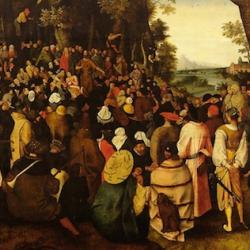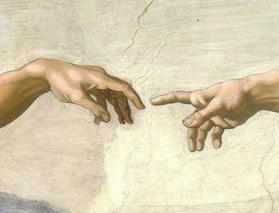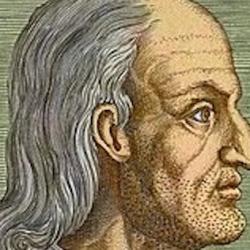Depoortere ( Badiou and Theology (Philosophy and Theology) ) provides a neat summary of Georg Cantor’s theological-mathematical treatment of infinity. Cantor was led into these theological waters by the same paradoxical sets that Badiou uses to disprove the existence of God. The difference between them is partly in their understanding of “consistent” and “inconsistent” multiplicities. Depoortere explains that “For Cantor, an inconsistent multiplicity is a multiplicity for which it is the case that ‘the assumption that all of its elements ‘are together’ leads to a contradiction, so that it is impossible to conceive of the multiplicity as unity, as ‘one completed thing.’ These multiplicities are described by Cantor as ‘absolutely infinite,’ which entails that they can only exist potentially. When, on the other hand, we have a consistent multiplicity, ‘the totality of the elements of that multiplicity can be thought of without a contradiction as ‘being together,’ so that they can be gathered together into ‘one thing.’” Only the latter count as “sets” because they have actual existence.
Badiou also uses the distinction of consistent and inconsistent, but he turns Cantor’s distinction upside down. For Cantor, the conclusion that a multiple is inconsistent is “at the limit of his mathematical endeavours,” at the limit where “the count-as-one fails” and where one “bumps into the absolute.” Badiou places the inconsistency first: “it is the nothing that precedes the count-as-one.”
All this left Cantor with two options:
“either we say that the absolute exists but then there is no room for it in mathematics and it has to be relegated to the domain of theology and metaphysics; or we accept its use in mathematics, but then we can no longer hold that the absolute has actual existence.” Cantor never offered a compelling mathematical explanation for taking the first route. His main argument was from potentially to actuality: “a potentially endless sequence is not possible if the domain in which the sequence is increasing does not already actually exist” (if the universe is expanding, what is it expanding into ?) Later mathematicians have not been convinced that a completely domain is necessary for a potentially endless sequence to be possible. Cantor’s motivations are finally theological. But then so are Badiou’s anti-theological.
Cantor’s concept of the “transfinite” is crucial. In an 1883 article, Cantor mentioned two principles of generation of numbers. The first is obvious: For any a that is an ordinal number, there exists a new ordinal number a + 1 that is the “immediate successor” to a. The second is ground-breaking: “given any unending sequence of increasing ordinal numbers there is a new ordinal number following them all as their ‘limit.’” From this limit, we can generate new numbers, Omega + 1, Omega +2, etc. By this, Cantor was able to extend “the sequence of natural numbers into the infinite.”
Depoortere cites Adam Drozdek’s claim that Cantor revived an Augustinian account of infinity, in three areas: “(1) ‘Infinity is an inborn concept which enables any knowledge’; (2) ‘Infinity can be found in the purest form in mathematics, and thus mathematics is the best tool for acquiring knowledge about God’; (3) ‘God is neither finite nor infinite and his greatness surpasses even the infinite.’” Depoortere argues that Cantor’s Augustinian infinity has advantages over the Creator-creature = Infinite/finite model found in Aquinas (and derived from Aristotle). Cantor’s distinction between transfinite and absolute infinity plays much the same role as Aquinas’, while also making room for the modern discovery of infinities immanent within the creation. But in place of the merely negative “in-finite,” Cantor’s distinction between absolute and transfinite opens up the possibility of speaking meaningfully about the infinite. Indeed, it might provide a way of combining apophatic and kataphatic theologies.
In explaining the last point, Depoortere relies on work of Robert Russell, who formulates a doctrine of analogy based on mathematical/set theory assumptions. Russell claims that “for every conceivable property of ordinals P, if Omega has property P, then there is at least one ordinal k < Omega that also has property P.” His argument is that “If there were some conceivable property P of ordinals such that Omega were the only ordinal with property P, then Omega would be conceivable . . . which is of course not possible because the Absolute is, by definition, inconceivable.”
In sum, “This means that we do in fact know something about the Absolutely Infinite: All the properties it possesses must be shared with and disclosed to us through the properties of the transfinites. The Absolute Infinite is in this sense knowable, comprehensible; each of its properties must be found in at least one transfinite number. The Absolute is disclosed through the relative, or transfinite, infinities, and yet it is through this disclosure that it remains hidden, ineffable, incomprehensible. Another way of putting this is that the incomprehensibility of Absolute Infinity is manifested by its partial comprehensibility. What we know about the Absolute Infinite is never more than partial knowledge shared by all relative infinities. What is truly unique about Absolute Infinity is never disclosed by forever hidden.”











